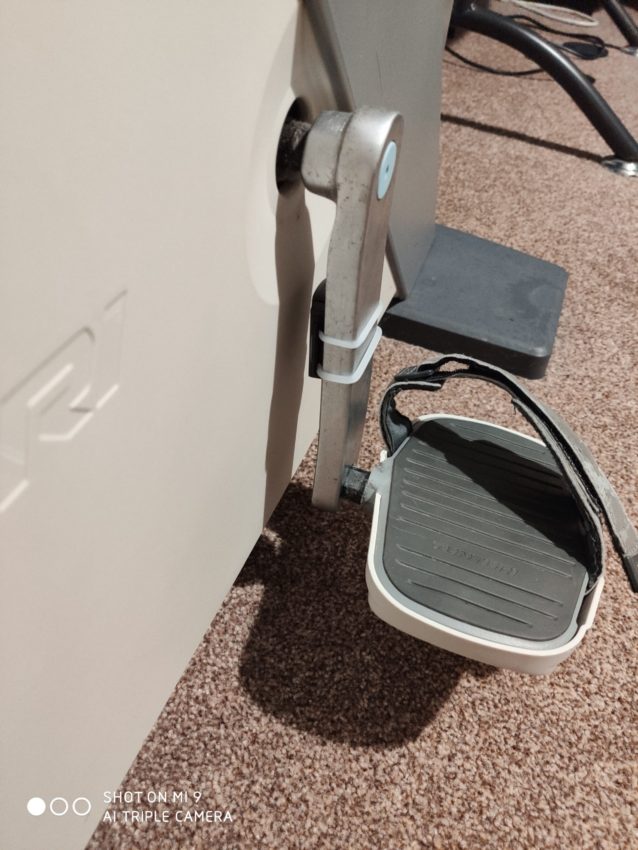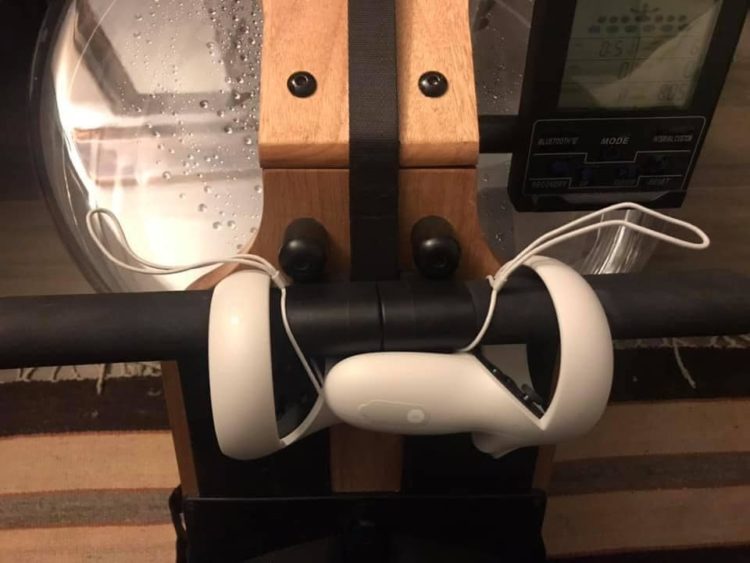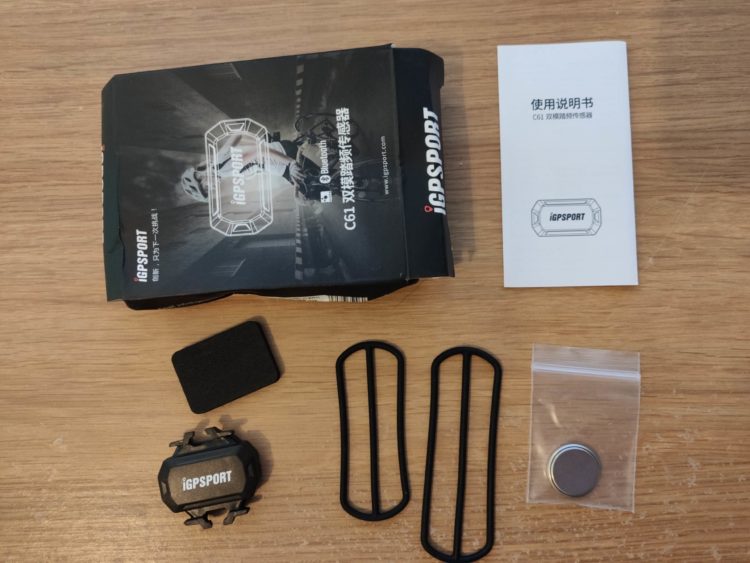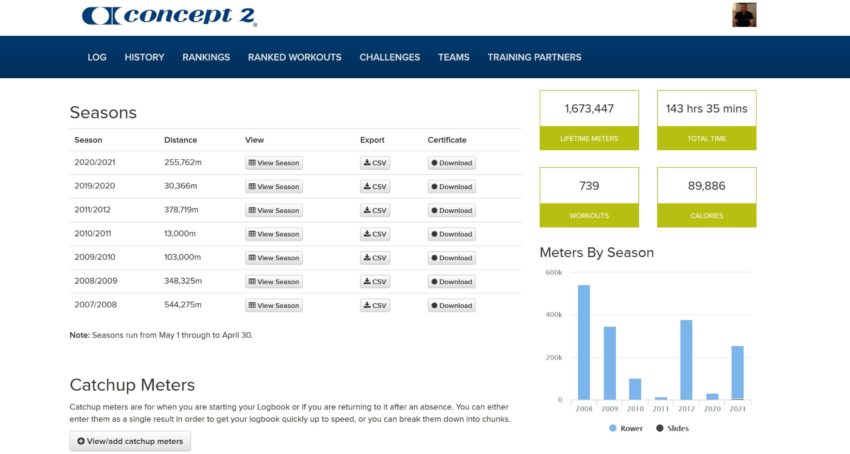If you’re a VR fitness enthusiast and own an Oculus Quest then Holodia’s Holofit is a service you should know about. Holofit enables you to wirelessly connect stationary bikes, rowers, and ellipticals to both the original Oculus Quest and Quest 2, allowing you to exercise across a variety of rich and diverse environments. Holofit can be an ideal training partner for users wanting to take their VR fitness sessions to the next level. As great as titles like Beat Saber, Supernatural and FitXR are, they are all essentially bodyweight cardio workouts. These titles are fun, addictive, and absolutely worthwhile, but they won’t push you to the brink the way a punishing 2K sprint on a Concept 2 rower, or a 300-watt hill climb on an indoor bike can do. By integrating cardio machines with virtual reality you can get substantially harder, and more concentrated workouts, as well as build one seriously cool home gym that will be the envy of your friends.
We’ve covered Holofit a lot over the past year, indeed, it has formed a core part of my own training regimen for almost all of the last twelve months, but until now it was only accessible via Sidequest, which unfortunately meant that the vast majority of Quest owners would never get to see or appreciate it. Thanks to Oculus relaxing its curation stance somewhat, and allowing more specialist, niche products directly onto the Quest store, now a whole new potential user base has opened up, meaning this excellent app should start to get the attention it deserves.
In this article, I want to introduce newcomers to exactly what Holofit is, how to use it, and discuss whether or not it’s worth it for you. I’ll attempt to anticipate and answer any questions you might have, and if there’s anything I missed, please let me know in the comments.
Let’s begin!
What Is Holofit?
Holofit is a monthly subscription service that brings your cardio machines into virtual reality, providing a series of immersive worlds and environments, through which to travel and explore whilst rowing, cycling, or using an elliptical. There are multiple workout modes, including simple exploration, trophy collecting, time trials, race modes, and cardio HIIT training. If you’ve ever suffered the tedium of rowing in your garage, staring at a concrete wall and wishing you were on a river in the mountains, or your feel your stationary bike rides might be more entertaining if you were pedaling across the dusty prairies of 19th century North America, then Holofit is what you need.
It helps distract from the tedium of necessary but boringly repetitive cardio exercise by immersing you in these various game worlds in that special way that only virtual reality really can.
It’s important to note that this is not a game, nor even gamified workouts but rather a training aid, a set of workout options and tools allowing you to set up and create workouts that are more entertaining, rewarding, and satisfying, thus increasing the chances of you actually consistently doing them!
How does it work?
The Holofit software runs on your Quest and connects to your machines wirelessly via Bluetooth. For this to work your cardio machine will either need to have FTMS Bluetooth capability, usually present only on high-end cardio equipment, such as a Concept 2 rower with a PM5 monitor, or you’ll need to buy a Bluetooth cadence sensor that you attach to the moving parts of your equipment, like the pedal of a stationary bike. As long as you can attach a Bluetooth sensor to a pedal in order to detect movement, Holofit will work with any piece of equipment, whether that be a high-end Peloton bike, or a cheap and cheerful hundred dollar offering from Walmart.
Once connected up simply using your cardio machine will translate to rowing, cycling, or running through an eclectic mix of sci-fi, fantasy, and natural environments. There’s real attention to detail in each of the game worlds, and all animals, birds, vehicles, and characters encountered are authentically voiced with accurate sounds. If you prefer to listen to music there are also some preset radio stations offering tracks from a few different musical genres.
Controller movement is an option too, but not intended to be a substitute for real machines.
A relatively recent addition to Holofit is the introduction of a controller mode, where you can use your Oculus Quest controllers to measure movement without the need for owning a cardio machine. Using this mode you can hold your controllers and swing your arms to simulate running, without needing to own an elliptical. You can also use your controllers to pedal a virtual handbike. This way any Quest owner can see the software in action, even if they have no machines to use at home. Holodia does have plans to expand the controller-based workouts but right now its main use is to let Oculus Quest owners without a cardio machine sample the software and get a sense of what it would be like to use. You can then decide whether investing in an exercise bike or cross trainer to use with Holofit is a worthwhile investment. I mention this as I’ve seen a couple of negative reviews on the Quest store complaining about how pointless and rubbish it is to use your arms to pedal a bike. I would have thought that this went without saying, but apparently, not everybody realizes that cycling is of course supposed to be done with a real bike, and the controller mode exists to let you get a flavor of the software if you don’t yet own any cardio machines, not as an alternative to it.
Getting Connected – Equipment and Sensor Guide
So that’s a general overview, let’s get down to the specifics. What cardio machines will Holofit support, and what Bluetooth sensors should you buy?
I’ll go through bikes, ellipticals, and rowers in turn before moving on to Bluetooth sensors. For more information on equipment compatibility, you should visit the Holodia website.
Bikes
Indoors bikes are both the most popular home use cardio machine, and the easiest to integrate into Holofit. If your bike has built-in FTMS Bluetooth then you can connect to Holofit directly, but even if all you have is a twenty-year-old foldable bike that’s spent most of its life in a cupboard, bringing it into the modern, virtual reality age is as simple as buying a Bluetooth cadence sensor.
The sensor attaches to the inside of a pedal, as you can see on my bike below. As long as your bike has pedals that rotate your bike will work fine with Holofit!

This works absolutely fine and the movement is smooth and fluid. Note that a cadence sensor measures only pedal rotations, not watt resistance, whereas using a bike with a direct Bluetooth connection and a cycle ergometer would bring watt resistance information into Holofit as well.
Here is some video footage of my bike in action, riding through Paris and taking in the nightlife.
Ellipticals
In Holofit using an elliptical or cross-trainer is depicted as running. The faster you pump your arms on the trainer the faster you’ll move. Again FTMS Bluetooth-supported ellipticals will connect directly, for other modes you’ll need to figure out where to put the sensor.
For detailed coverage check out my previous guide to connecting your elliptical to Holofit using a Bluetooth sensor, where you’ll see pictures of various elliptical design types and where to place the sensor on each.
Using an elliptical in Holofit sees your avatar running races. I don’t own an elliptical but I used the controllers to mimic one in the video below.
Rowers
Using Holofit in conjunction with a Concept 2 rower is a fantastically immersive experience. The rowing machine connects natively via its PM5 monitor and feels incredibly fluid and smooth. Rowing is one of the best full-body workouts that you can possibly do and it’s far easier to mentally prepare yourself to sit on the erg when you know you’re going to be rowing through one of Holofit’s immersive worlds. Rowing with Holofit twice a week has become one of my healthiest habits and is one of my favorite practical uses for VR to date.
Here’s some footage of me rowing on the Lac_d’Aiguebelette. Check out our Youtube channel for lots more Holofit environments.
Along with Concept 2s, Holofit also natively supports the following;
WaterRower with SmartRow or ComModule
TechnoGym SkillRow
StairMaster HIIT Rower
Domyos 500 Rower
Using Holofit with incompatible rowing machines; a short term hack, with a better longer-term promise from Holodia.
Non-Bluetooth-enabled rowers are more difficult to integrate with Holofit as they can’t easily be connected via a Bluetooth sensor as they have no pedals. I had therefore figured only high-end Bluetooth-enabled rowers would work with Holofit. However, some users in the Holofit Facebook group have reported satisfactory performance by selecting to use controller mode and simply looping their controllers onto their rower handlebars, as in the picture below.

Although this clearly isn’t the most optimal way to experience Holofit, this would enable even the cheapest rower to be used in VR. If you own a budget rower it’s certainly worth downloading the free Holofit trial to test it out.
Head tracking for non-Bluetooth enabled rowers coming soon
The developers have just put out a blog post announcing an update that will head tracking for rowing is coming soon. This would eliminate the need for the controllers and make setting up any rower incredibly straight forward and easy to do.
What if you don’t own any machine?
Finally, as mentioned previously you can simulate using any cardio machine with your controllers. This is a great way to simply test the software out and decide if purchasing a machine to use with Holofit is worth it for you, but it’s really not an appropriate way to use the app over the longterm. Holodia does have plans to develop this mode in the future into something with more substance, and we’ll continue to report on any new features, but in its current state Holofit is designed to be a subscription service that lets you wireless integrate cardio machines into virtual reality using Bluetooth technology.
What sensor should I buy?
Purchasing a compatible Bluetooth sensor to work with your bike or elliptical might sound confusing but it’s actually really straightforward. All you need to do is make sure you purchase a cadence sensor only. There are also Bluetooth speed sensors and Bluetooth speed/cadence dual sensors. You don’t want either of these!
As long as you buy a Bluetooth cadence sensor most brands will works. Holodia recommends the IGP Sport C61 cadence sensor, which they also sell on their website, but you can get more cheaply via eBay or Amazon. I use this one with my bike and it works absolutely fine.
Other reputable brand names include Garmin, Wahoo, Megane, and Polar.

Subscription Pricing, Free Trial, and Multiple User Accounts
Holofit is a subscription service. The monthly plan comes in at EUR9.9 ($10.75) and the yearly plan at EUR108 or ($130). You can download the app and get a free trial via the Oculus Quest store. I know that subscription services are viewed with some skepticism among VR gamers, and indeed gamers generally, but it’s important to stress this isn’t a game, it’s a unique training tool that offers, to my knowledge, the only way to bring all major cardio machines into VR. Furthermore, whilst indoor cycling has become increasingly gamified in recent years with services such a Zwift and Peloton proving incredibly popular, I can think of nothing that can do the same for a similar rowing or elliptical experience, so if you have one of those machines and want to make these workouts more engaging, this software is truly unique in what it offers.
Ultimately Holodia is a small team of just a few individuals selling a unique product that exists within a very small niche. To be able to make a living developing and improving the product a subscription plan is necessary, and the price is fair in my opinion.
Can I have multiple accounts on one license so my whole family can also use Holofit?
I reached out to Holodia for clarification on this and they said the following: ‘The HOLOFIT license is tied to the headset – one license per one headset. As far as the number of users who can use one headset, the limit is set at 5 meaning that a whole family could share one HOLOFIT. Currently, there will be one default user that is automatically logged in (the one whose email the subscription is under). All other family members who want to have their own profile only need to download the companion app on their phones, create their accounts, and then log in each time they want to use HOLOFIT. Currently, the only way to log in is to type in the email and password using the Oculus controllers, but we are working on a much better and easier user switching mechanism.’
So, in short, yes you can, although the manual login requirement for each user might be tedious initially. Hopefully, this will be one area they address early as I know many will see much more value in a subscription that can benefit the whole family rather than only a single user.
It’s also worth noting that Holodia often runs fairly sizeable discount offers on annual memberships so keep your eyes open for those.
Target market and is it worth it?
Ok, so hopefully you now have a much better idea of what Holofit is and how it works, but you might be asking if it’s worth the monthly or annual fee and if it’s right for you.
To answer that I will share my own experiences of having used the product for the past year. I’ve been using Holofit with my Concept 2 rowing machine, a piece of equipment that I had spent well over a thousand pounds on in 2008, but had not used in years. Below is a screenshot of my rowing log history. Note that Concept 2’s seasons run to stars on the 1st April each year so the 2019/2020 total was actually the same year as the 2020/21 season.

As you can see adding those totals I’m currently on 286,128 meters with almost three months of the season remaining, so on course for around 350,000 meters for the year.
As my logbook shows, I hadn’t previously used my rower since 2012 and had not been using it consistently since around 2009.
So using Holofit has got me back into rowing again, and more importantly, kept me rowing for almost a year. I’m on course to row more meters this year than any year since 2007/08, which is about the strongest endorsement of Holofit that I can give.
If you have cardio machines at home, and you’d like to use them more than you do, using Holofit is an excellent way to make your workouts more engaging and fun.
Holofit is available now on the Oculus Quest store.











